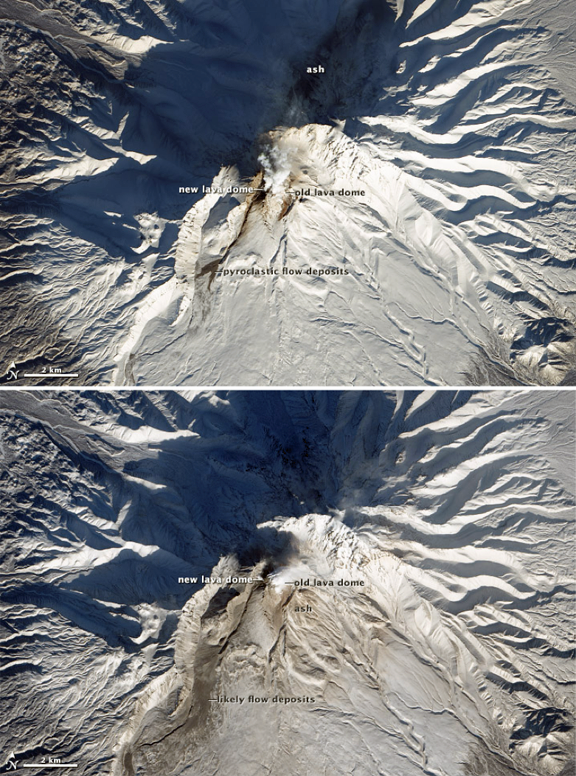
NASA Earth Observatory images by Jesse Allen and Robert Simmon, using Landsat data from the USGS Earth Explorer. Instrument: Landsat 8 - OLI
[SatNews] The summit of an erupting volcano is one of the most dynamic places on Earth.
These natural-color Landsat 8 images of Shiveluch were collected one week apart, on January 24 (top) and January 31, 2014 (lower). The two images show ash and pyroclastic flow deposits accumulating on the Russian volcano’s slopes.
The pyroclastic flows are generated by collapses on a new lava dome, growing on the northwest face of the dome that had been the site of most recent activity at Shiveluch. A tall ridge (created by a massive, Mount St. Helens-like eruption in 1964), prevents debris from the new dome from flowing northward, redirecting it to the southwest. In contrast, many earlier flows traveled to the south-southeast.
Stratovolcanoes like Shiveluch (and Mount Saint Helens) are constructed by the buildup of different types of lava, debris, and ash. The process takes thousands to hundreds of thousands of years. Analysis of the resulting layers allows geologists to decipher a volcano’s history.

